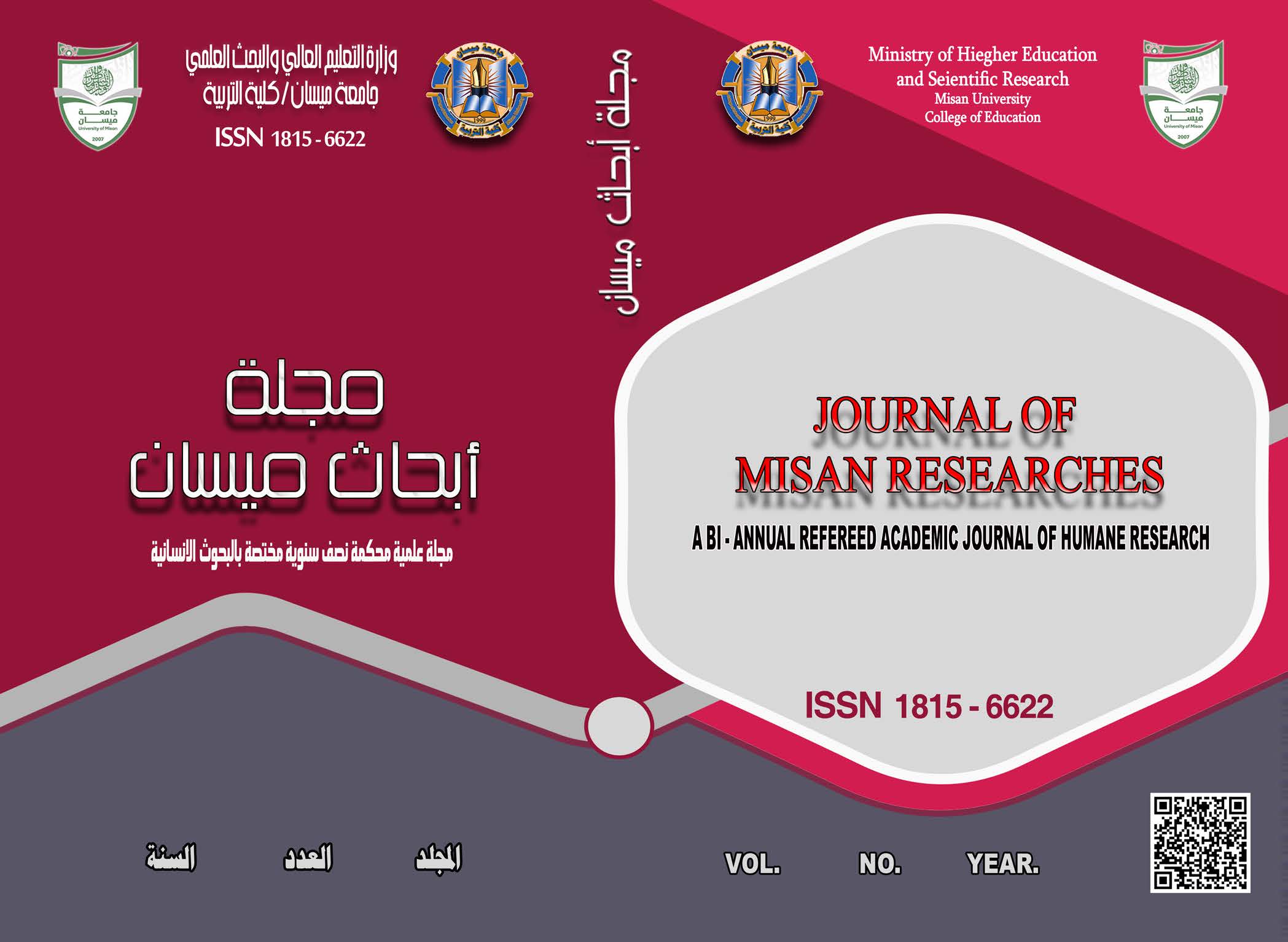Abstract
The phenomenon of stylistic deviation is considered one of the most prominent linguistic phenomena that scholars have focused on due to its impact on enhancing the beauty of poetic texts. This phenomenon appears through various linguistic levels, where stylistic deviation is defined as the departure of language from its original form to generate aesthetic dimensions. Its use has become particularly notable among Arab modernist poets, particularly in the arts of rhetoric. The Iraqi poet Sayyid Mohammed Jamal Al-Hashimi exemplifies this well, as he has utilized his poetry to express his faith and love for the Prophet Muhammad and his family. He employed stylistic deviation to create new connotations that strengthen the impact of his poetry. Thus, this research aims to explore the aesthetic and semantic dimensions of rhetorical deviation in the poems of his collection "Al-Hashimiyyat." The study begins with a primary question regarding manifestations of rhetorical deviation in the poetry of Sayyid Mohammed Jamal Al-Hashimi. It is assumed that the poet has distanced himself from traditional patterns in crafting his poetic images by using simile, metaphor, and metonymy. This approach attributes sensory qualities to inanimate objects, bringing meanings closer to the audience, making rhetorical deviation a fundamental element in his poetry. The study aims to investigate the dimensions of this rhetorical deviation and analyze its types, including simile, metaphor, and metonymy. The main findings of this research summarize as follows: The concept of rhetorical deviation refers to the rhetorical departure at the semantic level through the elements of rhetorical science, such as metaphor, simile, metonymy, and synecdoche, leading to subdivisions such as simile-based deviation, metaphorical deviation, metonymic deviation, and synecdochic deviation
Keywords
metaphor
metonymy
poet Sayyid Mohammed Al-Hashimi
Simile
Stylistic deviation
synecdoche
Abstract
ظاهرة الانزياح تعد من أبرز الظواهر اللغوية التي اهتم بها العلماء لما لها من أثر في تعزيز جمالية النص الشعري، وتظهر هذه الظاهرة عبر مستويات لغوية مختلفة، إذ يُعرف الانزياح بخروج اللغة عن أصالتها لتوليد أبعاد جمالية، وقد اشتهر استخدامها بين شعراء الحداثة العربية، متجليةً بشكل خاص في فنون البيان، ويمثل الشاعر العراقي السيد محمد جمال الهاشمي مثالاً مميزاً لذلك، حيث سخّر شعره للتعبير عن إيمانه وحبه للنبي محمد وأهل بيته، واستخدم الانزياح البياني لابتكار دلالات جديدة تعزز من قوة شعره، ومن هنا جاء اختيار هذا البحث لرصد الأبعاد الجمالية والدلالية للانزياح البياني في قصائد ديوانه "الهاشميات". ينطلق البحث من تساؤل رئيسي حول مظاهر الانزياح البياني في شعر السيد محمد جمال الهاشمي، ويُفترض أن الشاعر ابتعد عن النمط التقليدي في تكوين صوره الشعرية باستخدام التشبيه والاستعارة والكناية، مما أضفى على الجمادات صفات المحسوسات ليقرب المعاني للمتلقي، ليصبح الانزياح البياني عنصراً أساسياً في شعره، وتهدف الدراسة إلى استكشاف أبعاد هذا الانزياح البياني، وتحليل أنواعه كالتشبيه والاستعارة والمجاز، النتائج الرئيسة لهذا البحث تتلخص فيما يلي: يشير مفهوم الانزياح البياني إلى الخروج البلاغي في المستوى الدلالي عبر عناصر علم البيان، مثل الاستعارة، التشبيه، الكناية، والمجاز، مما يجعله يتفرع إلى أنواع مثل الانزياح التشبيهي، الاستعاري، الكنائي، والمجازي
Keywords
الانزياح البياني، الاستعارة، التّشبيه، الكناية، المجاز، الشّاعر السّيّد محمّد الهاشمي
